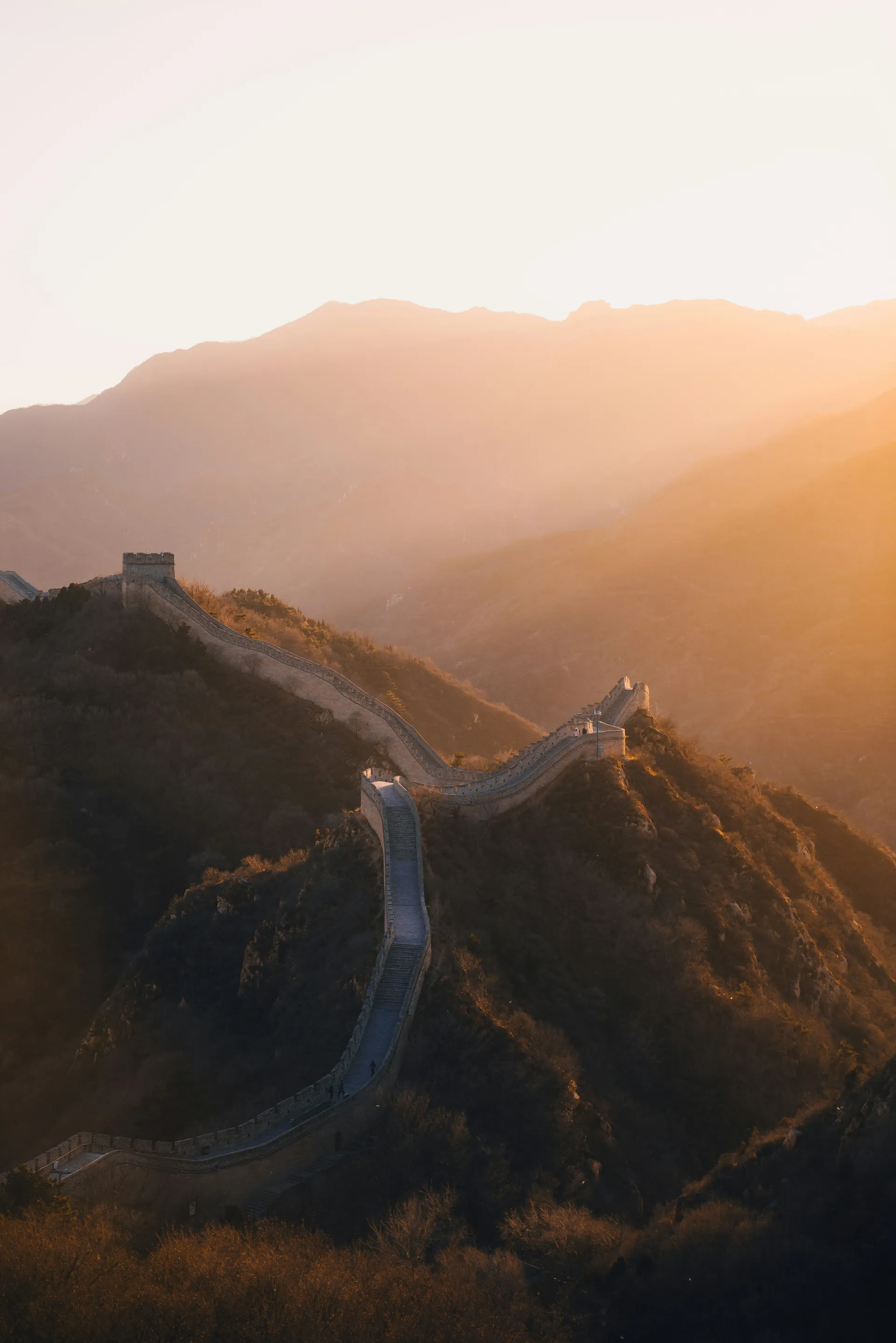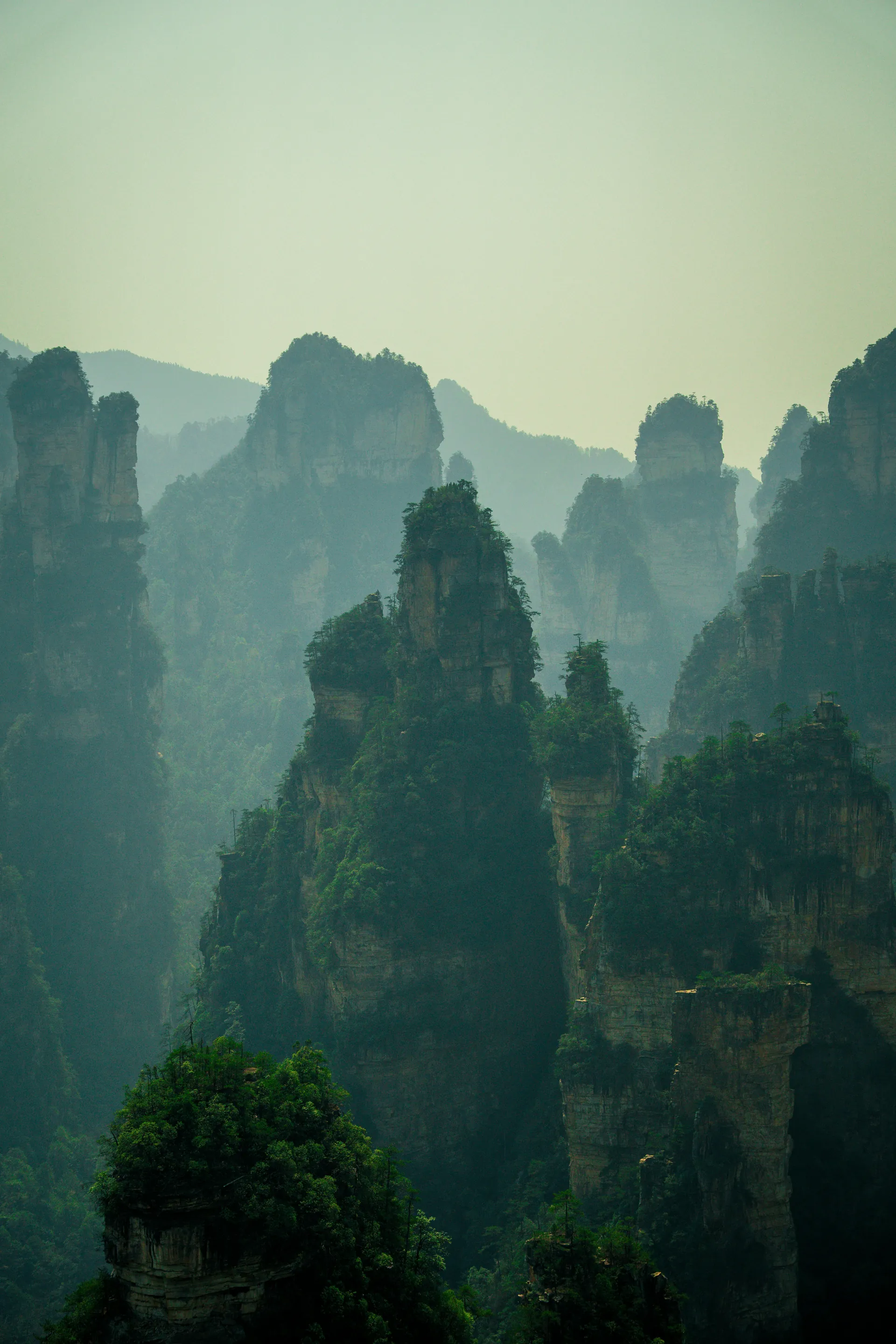Table of Contents
This guide will help you navigate the best places to visit in China, ensuring your journey is filled with unforgettable experiences and a deep appreciation for the country's rich cultural heritage.
Ancient Wonders and Historical Sites

The Great Wall of China
The Great Wall of China, one of the most iconic UNESCO Heritage Sites, is a must-visit when traveling to China. This ancient series of fortifications, built over several centuries to protect the Chinese Empire from invasions, stretches over 13,000 miles.
The best sections to visit include Mutianyu and Badaling, both near Beijing, which offer stunning views and well-preserved architecture. Mutianyu, in particular, is known for its green scenery and sunset glow, making it a favorite among photographers and hikers alike.
The wall's history is as fascinating as its architecture, with different sections built by various dynasties and featuring unique characteristics such as the Barrier Walls and engraved bricks that tell the story of its construction.
Xi'an and the Terracotta Warriors
In the heart of China lies Xi'an, a city steeped in history and home to one of the world's most remarkable archaeological discoveries: the Terracotta Warriors. These life-sized clay soldiers, over 8,000 in number, were buried with the first emperor of China, Qin Shi Huang, to protect him in the afterlife. The site is a marvel of ancient craftsmanship and engineering, with each soldier uniquely detailed and arranged in military formation.
Visiting Xi'an also offers the opportunity to explore the ancient city walls, the Bell Tower, and the Muslim Quarter, providing a comprehensive glimpse into China's rich historical and cultural heritage.
The Forbidden City, Beijing
Located in the heart of Beijing, the Forbidden City is another unparalleled historical site that showcases China's imperial past. This vast palace complex, once the residence of the emperors of the Ming and Qing dynasties, is the largest preserved ancient wooden structure in the world.
With over 980 buildings and more than 8,700 rooms, the Forbidden City is a testament to Chinese architecture and the grandeur of imperial China. Visitors can explore the intricate courtyards, halls, and gardens, each filled with artifacts and stories of the emperors who once ruled from this very place. The Forbidden City is not just a historical site but a living museum that offers insights into the daily life and rituals of China's royal families.
Natural Escapades

Zhangjiajie National Forest Park
Zhangjiajie National Forest Park, located in Hunan Province, is a natural wonder that has captivated the imagination of travelers worldwide. Renowned for its unique pillar-like rock formations, this park famously inspired the Hallelujah Mountains in James Cameron’s movie "Avatar." Visitors can experience breathtaking adventures, including a ride on the Bailong Elevator, the world’s tallest outdoor lift, which ascends 1,070 feet in less than two minutes. Another highlight is the Zhangjiajie Grand Canyon Glass Bridge, the longest and highest pedestrian glass bridge globally, offering heart-pounding views and an unforgettable experience.
The park is also home to diverse wildlife, such as monkeys and rare bird species, and features well-maintained trails for hiking and exploration. The Golden Whip Stream, a 7.5-kilometer-long scenic stream, is a must-visit. It provides a tranquil hike through steep peaks and luxuriant trees, with opportunities to interact with wild monkeys and discover local legends and scenic spots along the way.
Guilin and Its Limestone Karsts
Guilin, situated in Guangxi Province, is celebrated for its stunning limestone karst landscape, sculpted over millions of years. Towering karst peaks rise dramatically from the Li River, creating a picturesque and serene environment. A boat cruise along the Li River is a popular way to immerse yourself in Guilin’s beauty, offering breathtaking views of the karsts and surrounding countryside.
Beyond its natural beauty, Guilin is known for its vibrant local culture and historical sites. Attractions such as the Reed Flute Cave, with its colorful stalactites and stalagmites, and the iconic Elephant Trunk Hill, a symbol of Guilin, make this city a must-visit destination for nature lovers and cultural enthusiasts alike.
Jiuzhaigou Valley
Jiuzhaigou Valley, located in Sichuan Province, is a UNESCO World Heritage Site and one of China's most beautiful national parks. Known for its crystal-clear lakes, waterfalls, and snow-capped mountains, Jiuzhaigou offers a surreal and untouched natural environment. Highlights include turquoise lakes such as the famous Five-Color Pond and the Mirror Lake, which reflect the surrounding mountains and forests, creating a stunning mirror-like effect.
The park also boasts rich cultural heritage, with several Tibetan villages and temples scattered throughout the area. Visitors can hike along well-marked trails, take in panoramic views from observation decks, and immerse themselves in local Tibetan culture. Jiuzhaigou Valley provides a unique and enriching natural escapade in China.
Modern Metropolises

Shanghai — The Blend of Modernity and Tradition
Shanghai, China's largest city, is a vibrant metropolis that seamlessly blends tradition with modernity. The city's iconic Bund, a colonial-era promenade along the Huangpu River, stands as a testament to its rich historical past, with its elegant old customs houses and Western-style architecture. In stark contrast, the futuristic skyline of Pudong, with towering skyscrapers like the Shanghai Tower and Jinmao Tower, represents the city's rapid modernization and global influence.
A stroll along the Huangpu River offers a unique blend of old and new, where the traditional shikumen houses and historical buildings coexist with modern high-rise developments. The Yu Garden, a 500-year-old classic Chinese garden, provides a serene escape from the bustling city, while the Old Town Bazaar and its vibrant markets showcase the city's traditional culture and local wares. Shanghai's ability to harmoniously merge its past with its present makes it a captivating destination for any traveler.
Beijing — Capital Culture
Beijing, the capital city of China, is a hub of cultural and historical significance. Beyond its ancient wonders like the Forbidden City and the Great Wall, Beijing offers a rich tapestry of modern attractions. The city's modern skyline, particularly in the Central Business District, features sleek skyscrapers and innovative architecture.
The Wangfujing shopping street is a bustling area that combines traditional markets with modern retail, offering everything from local snacks to high-end fashion. Beijing is also known for its vibrant arts scene, with numerous galleries and museums, such as the National Museum of China and the 798 Art District. This former industrial area has been transformed into a thriving arts community, showcasing contemporary Chinese art and culture.
Additionally, Beijing's culinary scene is renowned, with a mix of traditional dishes like Peking duck and modern fusion cuisine, making it a city that caters to all tastes and interests.
Chengdu — More Than Just Pandas
Chengdu, the capital of Sichuan Province, is often associated with the giant panda, but it offers much more than just its famous panda breeding research base. This city is a melting pot of traditional and modern elements, with a rich cultural heritage. The Jinli Street, a historic pedestrian street, is lined with traditional Sichuan architecture, tea houses, and local shops, providing a glimpse into the city's past.
Chengdu is also known for its modern infrastructure, including the Chengdu Shuangliu International Airport and the high-speed rail network that connects it to other major cities in China. The city's culinary scene is famous for its spicy Sichuan cuisine, and the Wide and Narrow Alleys (Jinli and Kuanzhai Alleys) offer a blend of traditional eateries and modern cafes.
Moreover, Chengdu's proximity to natural wonders like Mount Emei and the Leshan Giant Buddha makes it an ideal base for exploring the region's natural and cultural attractions. The city's blend of traditional culture, modern amenities, and natural beauty makes it a compelling destination for any traveler to China.
Conclusion
As you conclude your journey through the best places to visit in China, remember the diverse tapestry of ancient wonders, natural escapades, and modern metropolises that this vast country has to offer. From the majestic Great Wall and the Forbidden City to the breathtaking landscapes of Zhangjiajie and Guilin, and the vibrant cities of Shanghai and Beijing, each destination offers a unique glimpse into China's rich cultural heritage and stunning natural beauty. Whether you are a history enthusiast, a nature lover, or a city explorer, China has something for everyone.
So pack your bags, grab your camera, and embark on an unforgettable adventure in this incredible country.
FAQ
Do I need a visa to visit China, and are there any specific requirements for my passport?
Depending on your country of origin, you might be eligible for visa-free entry. From November 30, 2024, to December 31, 2025, ordinary passport holders from 38 specified countries can enter China visa-free for up to 15 days. Your passport must be valid for the duration of your stay in China.
It is recommended that your passport have at least six months of validity beyond your planned departure date from China and at least two blank pages.
What types of currency and payment methods are accepted in China, and are credit cards widely used?
In China, the official currency is the renminbi (RMB), also known as the Chinese yuan (CNY). While cash remains important, especially in remote areas, digital payments are widely adopted.
Credit cards are accepted in many major hotels, restaurants, and shops, but their use is not as universal as mobile payment systems like WeChat Pay and Alipay. Foreign currencies are generally not accepted for transactions, though some hotels and vendors near tourist areas may accept major international currencies such as US dollars, euros, and pounds.
Is the water from the tap safe to drink in China, and what are the general health and safety precautions I should take?
No, tap water in China is not safe to drink due to contaminants like heavy metals, bacteria, viruses, and other pollutants. While boiling water kills pathogens, it does not remove harmful substances. Use boiled or bottled water for drinking, and consider using a water filter.
Tap water is safe for washing and brushing teeth.
Are there any special permits or additional requirements for visiting certain regions in China, such as Tibet?
Yes, special permits and additional requirements are needed to visit certain regions in China. For instance, a travel permit is required to enter the Tibet Autonomous Region, and it must be issued through a travel group. Parts of Xinjiang also require a China travel permit.




.webp)






